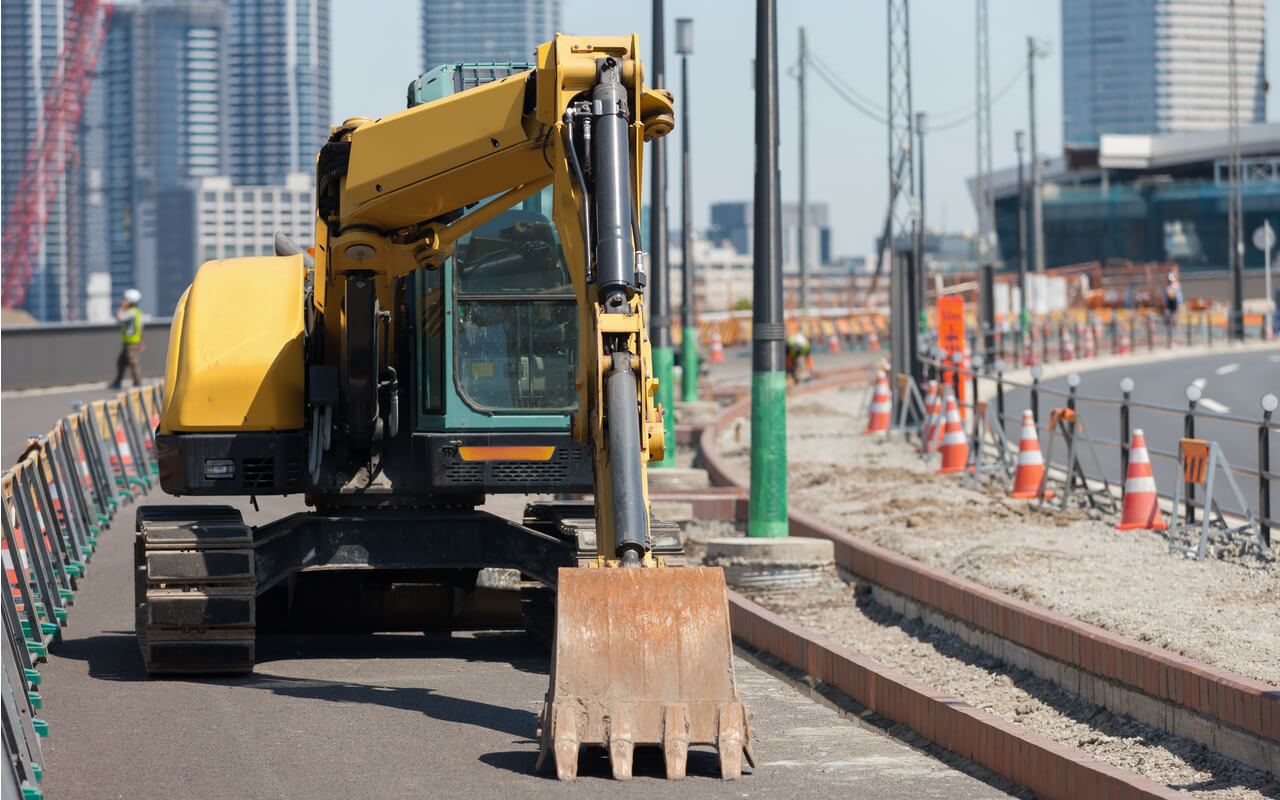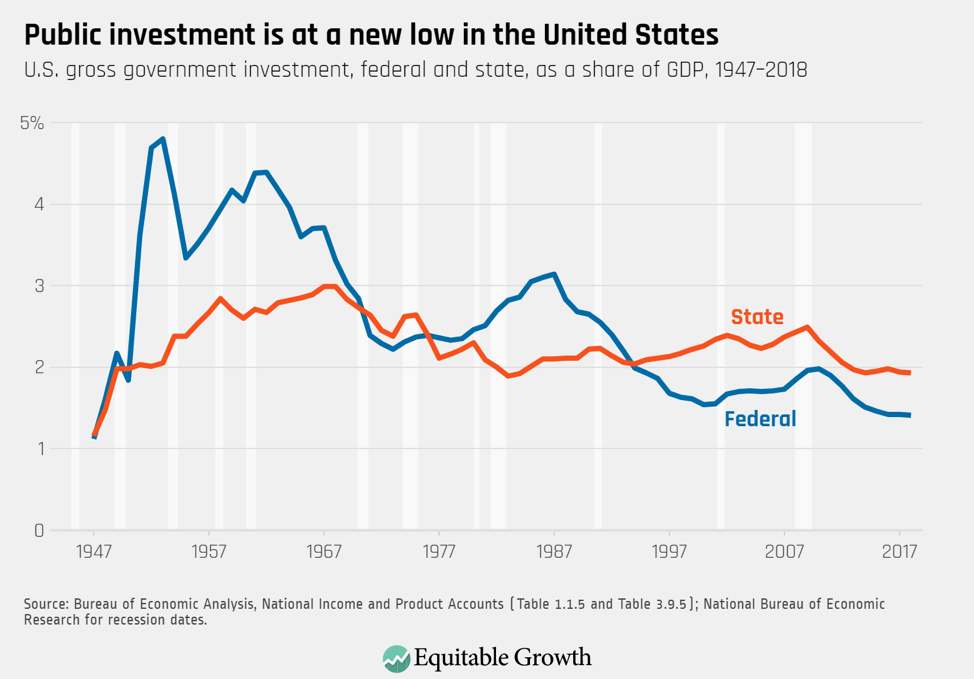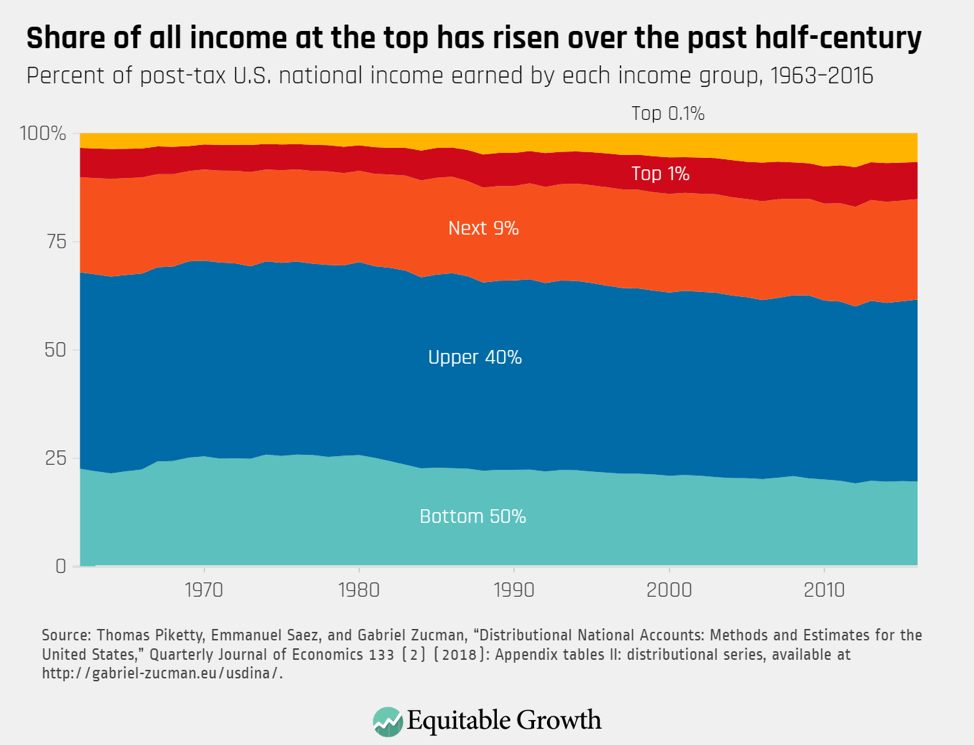Public investment is crucial to strengthening U.S. economic growth and tackling inequality

Despite policymakers’ oft-repeated promises of more spending on infrastructure and other key investments, U.S. public investment has reached new lows. Public investment is a key driver of long-term productivity and economic growth. The evidence shows that investments in infrastructure and human capital are critical to ensuring future prosperity in the U.S. economy, particularly when inequality is high. It is time policymakers made a serious commitment to increasing public investment.
Failing to make important public investments dampens overall U.S. productivity and growth and disproportionately hurts low-income families and children. Public investments are critically important now, in a time when economic inequality constricts strong and stable growth by obstructing the supply of people and ideas into the economy and limiting opportunity for those not already at the top.
The decline of public investment and the rise of economic inequality
At around 1.4 percent of Gross Domestic Product, federal investment today stands at the lowest level since 1947. The decline in state investments has been less dramatic but still significant. Spending by state and local governments on all types of capital dropped from its high of 3 percent of GDP in the late 1960s to less than 2 percent now. (See Figure 1.)
Figure 1

Beginning in the mid- to late 1970s, economic inequality also started to increase. The fruits of economic growth accrued disproportionately to those at the top of the income ladder. The most recent data on the distribution of U.S. income by Gabriel Zucman and Emmanuel Saez at the University of California, Berkeley show that the share of total economic income held by the top 10 percent hit 40 percent in 2012, before dropping to 38.4 percent by 2016, the most recent year for which complete income-distribution data are available. The rise of more than 10 percentage points started from lows of around 30 percent in the 1960s and 1970s. (See Figure 2.)
Figure 2

Robust U.S. public spending today is key to future economic growth and prosperity
For strong, stable, and broadly shared U.S. economic growth, federal, state, and local governments must make more investments to ensure that people with talent are able to acquire skills and to access capital. There are two key pathways for this increased public spending on physical capital and on human capital—both of which will build the base upon which private-sector spending can thrive.
Infrastructure
Spending on infrastructure is essential to strong and stable economic growth. There is a long list of pressing infrastructure needs that policymakers can target, including roads and bridges, public transportation, clean air and water systems, and energy-efficient power generation. The state of the country’s infrastructure has a real impact on families’ well-being and the economy’s ability to grow.
It is often poorer areas that are in need of repairing outdated infrastructure, such as aging lead pipes. Five years after the (still ongoing) water crisis in Flint, Michigan began—which occurred when the city switched water sources to reduce deficits—Newark, New Jersey, is now facing a similar crisis, predominantly affecting low-income and black residents. The failure to provide safe and clean water threatens current and future economic growth as lead accumulation harms the immediate well-being of residents, as well as the development of children who will later enter the workforce.
Investment in public transportation is essential to physical access to opportunity and economic mobility. An unreliable and inefficient transportation system not only hurts productivity and economic growth, but also disproportionately impacts low-income families. Research shows that commute times are a strong predictor of upward mobility—stronger than even crime or school test scores. Harvard University’s Raj Chetty and Nathaniel Hendren, alongside UC Berkeley’s Patrick Kline and Emmanuel Saez, find that children from areas where more residents have a long commute to work have a significantly lower chance of moving up the income ladder. Public transportation also determines access to education, healthcare, and other essential services for many families.
The list of the country’s infrastructure needs goes on and on. One-third of interstate highway bridges are more than 50 years old, for example, and need to be repaired or replaced. Nearly one-quarter of the U.S. population lives in low broadband-subscription neighborhoods, where less than 40 percent of residents have access to high-speed internet. Big public construction projects to address these needs, like those undertaken by the Works Progress Administration in the 1930s amid the Great Depression, can create a significant number of well-paying jobs and spur job growth in local economies, especially during an economic downturn.
Human capital
Public investments in education and other investments in human capital have great consequences in an era of high economic inequality. Economists Brad DeLong at UC Berkeley and Claudia Goldin and Lawrence Katz at Harvard argue that education played a critical role in boosting U.S. economic growth in the 20th century and make the case for more investment:
During the twentieth century, America’s investment in education was a principal source of its extraordinary performance … A renewed commitment to invest in education is probably the most important and fruitful step that federal, state, and local officials can take to sustain American economic growth.
Despite the evidence of positive educational and economic outcomes, public colleges and universities in most states now receive most of their revenue from tuition rather than government funding. Chronic disinvestment in Kindergarten through 12th grade education has also prompted a wave of teacher strikes across the country, as spending levels have still not recovered from deep cuts made during the Great Recession.
Public investment in early childhood programs and high-quality childcare also is critical in sustaining and growing the current and future productivity of the U.S. economy. The steep costs of childcare and education shut out low- and middle-income families and block their children from fully developing their human capital, while those at the top have the resources to safeguard the best environment for their children. Research shows that rising childcare costs drive women out of the workforce because parents come to depend more on informal childcare arrangements that are less reliable. Investing in early childhood care and education also matters for the children and their future outcomes. The failure to invest in a critical stage of human capital development deprives the United States of future workforce productivity.
What’s more, investment in low-income children often more than pays for itself because it raises their future earnings and decreases their dependence on public aid, as new research shows. Examining 133 policy changes from the past five decades, Harvard economists Nathaniel Hendren and Ben Sprung-Keyser conclude that programs for low-income children have the highest return on government investment. With the caveat that return on investment is just one measure of success, the authors find that the investments in children’s health and education they examine were fully repaid and with surplus. They also find investment in children through young adulthood continues to generate positive results.
Private investment
Public investments pave the way for private-sector innovation and growth. Many of the biggest advances in economic productivity, innovation, and technological capacity have been the result of government action.
The internet was originally a project funded by the Department of Defense, and NASA maintains a catalogue of thousands of technologies that became commercial products. The Apollo Space program, which sent the first astronauts to the moon 50 years ago, helped accelerate innovation and create technologies that had widespread use and application. They included the integrated circuit—the basis of what is in computer chips today—which helped launch Silicon Valley and the computer revolution.
In her book The Entrepreneurial State: Debunking Public vs. Private Sector Myths, University College London economist Mariana Mazzucato highlights the role of government investment at the heart of major technological breakthroughs, noting that Apple Inc. and other successful private companies owe much of their value to government-supported research and development. Nearly all the technologies in the iPhone—including GPS navigation, voice recognition, and touchscreen capabilities—were developed through government investments, while Alphabet Inc.’s Google search engine algorithm was funded by the National Science Foundation. It’s evident that public investment encourages and facilitates innovation in the private sector.
Conclusion
Given the current low interest-rate environment, the U.S. government should capitalize on the low costs of borrowing by making big investments now. Doing so would deliver higher growth and lower inequality. Economic inequality subverts our public institutions and the policymaking process needed to support the economy— as Equitable Growth President and CEO Heather Boushey argues in her new book, Unbound: How Inequality Constricts Our Economy and What We Can Do About It. Rising economic inequality is behind a growing imbalance between what people want and the outcomes of policymakers’ decision-making about government revenue and public investment levels.
There is wide public support for public investments— and even for the taxes that will fund them, as long as they are put to good use. But the policy priorities in Washington tend to align with the preferences of the wealthy and don’t necessarily support the growth of the whole economy. This needs to change. The broader economy will reap the benefits of a well-educated labor force and steady stream of entrepreneurial ventures.



